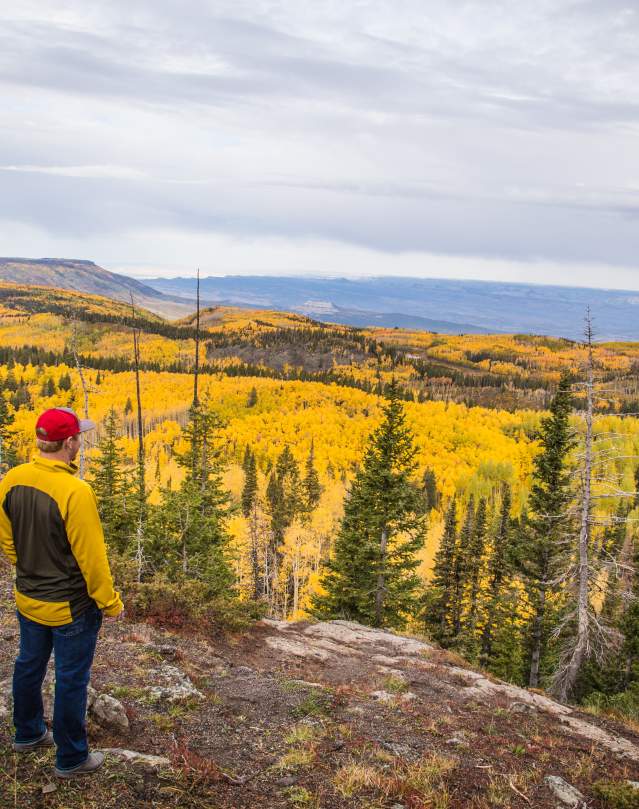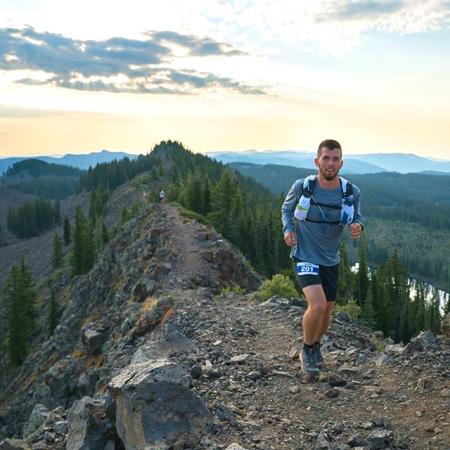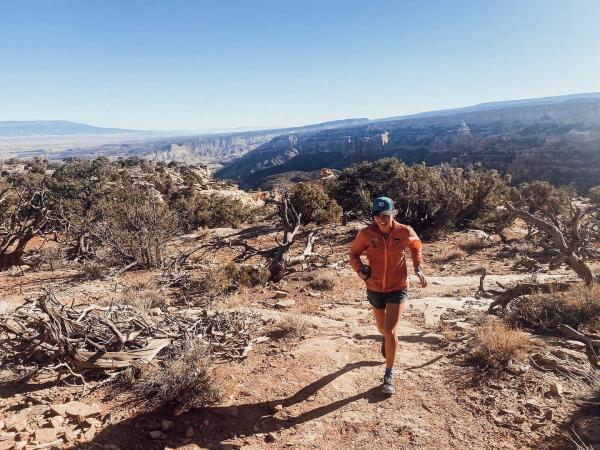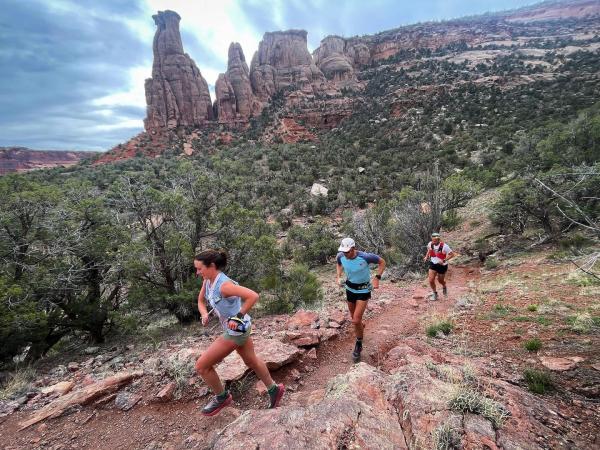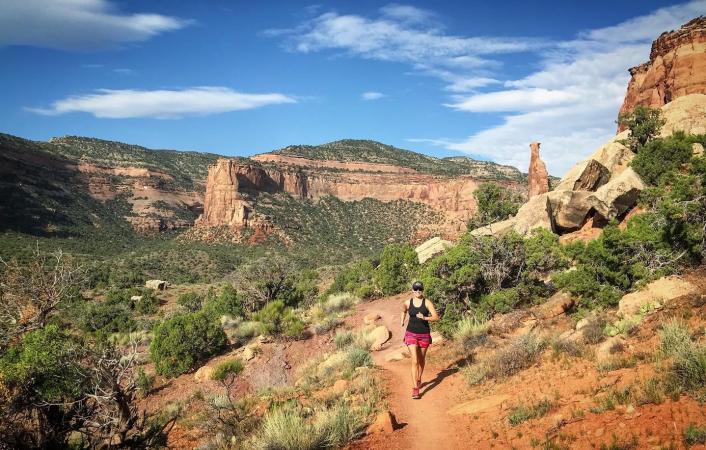Whether it’s skiing, biking, hiking or running, Coloradans, and those who visit this great state, are passionate about the outdoors. Colorado has some of the country’s most beautiful landscapes like Rocky Mountain National Park, Mesa Verde National Park, and Colorado National Monument. Grand Junction—one of the New York Times’ top places to go in 2023—has become particularly popular for trail runners, who can get their miles in while exploring scenic sandstone canyons, forests, and more. Lace up and discover some amazing running trails in Colorado. The best part is that all these spots double as excellent hiking trails too!
Benefits of Trail Running
While running on natural terrain has existed for millennia, the sport of trail running has taken off in recent years, and its popularity is not just a fad. Trail running offers both body and mind benefits that are vital when building stamina and strength.
It’s common knowledge that exercise has a positive effect on brain health, releasing endorphins and helping to alleviate stress. There is also significant evidence showing that immersing oneself in nature can provide a mood boost and help mitigate anxiety. By combining physical exercise and proximity to nature, trail running encourages you to focus on the terrain in front of you, which distracts your mind from thoughts that cause stress.
Additionally, people love trail running for its physical benefits. Running on paved roads or sidewalks is high-impact and repetitive, while trail running is easier on your muscles and joints. Natural terrains, such as dirt and grass provide a soft surface that helps reduce the impact on your joints and makes running more accessible. At the same time, running on variable terrain and uneven surfaces encourages you to use a wider variety of muscles and promotes better balance and impact conditioning. For example, running on a trail with rocks and roots can help to build ankle strength and balance, while also minimizing the risk of injury caused by repetitive motion and impact.
Runners who are accustomed to exercising near busy roads may also want to consider trail running for its safety benefits. The only traffic you risk encountering on a trail is other runners and hikers, so it is extremely safe.
Trail Running vs. Road Running Shoes
As with most sports, the benefits of trail running are maximized by having the right equipment. In this case, the right equipment comes down to having the right shoes. Unlike road running shoes, which are designed to be lightweight and well-cushioned, trail running shoes prioritize support, grip, and protection. Above all, trail running shoes are made with versatility in mind, due to runners covering all sorts of surfaces and conditions. In a single outing, you can find yourself running up a rocky incline, racing over a dirt path, or navigating a muddy forest floor.
In terms of design, there are a few key features that distinguish trail running shoes from road running shoes. For one, trail running shoes have thicker outsoles. These are typically made from a soft rubber material, which increases traction on various running surfaces. Tread patterns on the shoe's sole tend to be deeper and are designed for added grip, enabling you to run on rocky or muddy paths. Trail running shoes also tend to have more durable midsoles and uppers to protect your feet from things like rocks and branches. Many trail shoes have a built-in rock plate in the midsole, which is a hard layer that stops sharp rocks from piercing your foot through the rubber sole. In general, trail shoes can be described as more heavy-duty than standard running shoes.
If you’re in the market for a pair of trail running shoes, look no further than Brown's Shoe Fit Company, a family-owned shoe store in Grand Junction with a wide selection of athletic footwear, including trail running shoes.
Interested in some outdoor apparel to keep you running through any weather conditions? Check out Grand Junction's local REI or Dick’s Sporting Goods and load up on the rest of your running essentials. Summit Canyon Mountaineering, Loki Outerwear, and Gear Junction are other local outdoor shops with local staff who are happy to offer free advice about outdoor recreation in Grand Junction. There are many other specialty outdoor shops, you can check them out here.
Running Trails in Grand Junction
Arguably one of the biggest challenges with trail running—particularly for city runners—is deciding where to go. In Grand Junction, there is an abundance of dynamic trails that runners love. From red-rock canyon trails and lakefront routes to high-incline paths with rewarding overlooks, Grand Junction has some of the best running trails in Colorado.
Echo Canyon Trail
The Echo Canyon Trail is an easy running and hiking path in Colorado National Monument. Spanning 1.6 miles, the out-and-back trail begins at the Devil's Kitchen parking lot, about a 15-minute drive from Downtown Grand Junction. The trail begins with a moderate climb over sandstone and takes you through a cottonwood forest and a scenic rocky canyon. This trail is not dog-friendly, so please leave your furry companions at home for this one.
Connected Lakes Trail
With minimal elevation change, the Connected Lakes Trail is a 2.4-mile circular route, making it easy to take on more if you feel like extending your run. As the name suggests, the path takes you alongside and between two lakes connected by a narrow waterway. This low-intensity trail, located in Grand Junction, consists of paved and unpaved paths and is dog-friendly, as long as you follow proper dog etiquette and your pup stays leashed at all times. For more information on dog etiquette, check out this page. Because this trail is within the James M. Robb State Park, please also be sure to purchase a state park pass (daily or annual) before entering the park if you plan to hang out or use the facilities. There is a self-pay station at the entrance, or you can purchase a state park pass online.
Rattlesnake Arches Trail
Famed for the second-most natural arches in the world, Rattlesnake Canyon is a 15.5-mile roundtrip of truly spectacular scenery. There are over 35 arches in total at Rattlesnake Arches, the famous Centennial Arch and Cedar Tree Arch. Rattlesnake Arches Trail is just 30 minutes from Grand Junction and is a great adventure for trail runners—there are even some scrambling opportunities if you are a seasoned boulderer. Be sure to bring plenty of water for this trail, as there is very little shade and places to cool down.
Monument Canyon Trail
Located within the Colorado National Monument, this 5-mile loop takes runners across incredible sandstone landscapes, past unique rock formations, and over moderately technical terrain. For those looking for a greater challenge, the Monument Canyon Trail also offers a 12-mile loop option.
Eagle’s Nest Loop
The Eagle’s Nest Loop is a 6-mile circular trail just west of Grand Junction. Due to the technical terrain, including rocky tracks and steep inclines, this pathway is best suited for more experienced runners. It’s a rewarding one though, with stunning views of Colorado National Monument and the Grand Mesa. This trail is also open to mountain bikers.
Plan Your Grand Junction Trail Running Trip
Grand Junction is the ideal place for taking up trail running as a sport. In addition to trail running, guests can also enjoy other outdoor activities like hiking, horseback riding, cycling, golfing, and more. No matter the season, there are always many activities and events on the calendar. Start planning your trip today!

